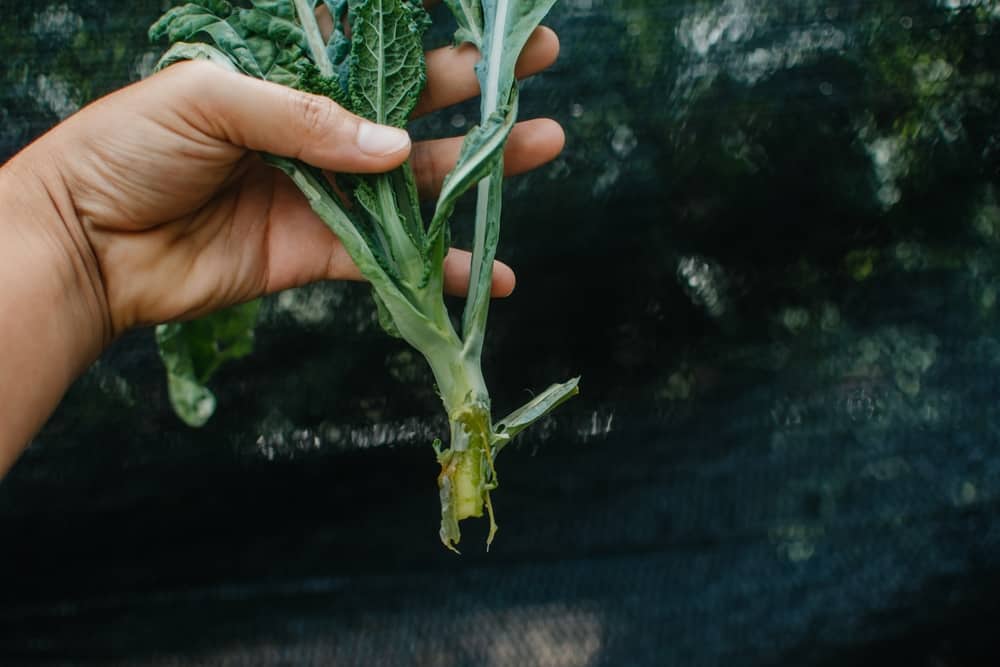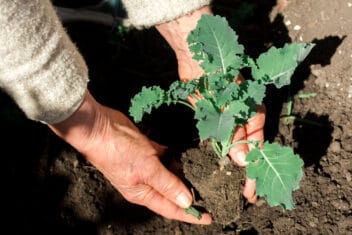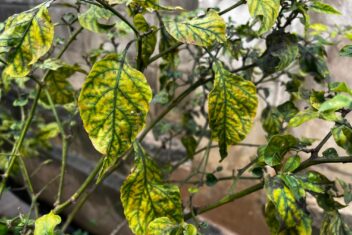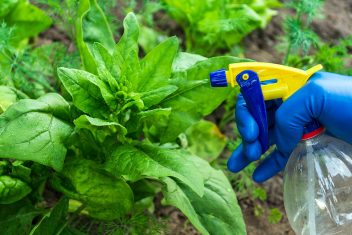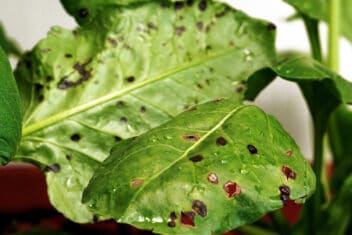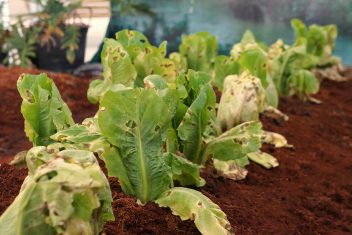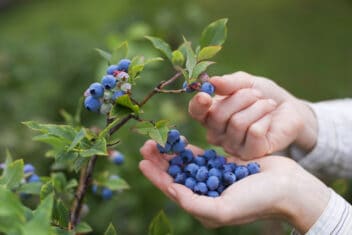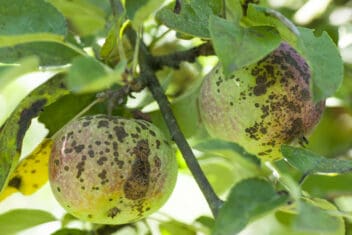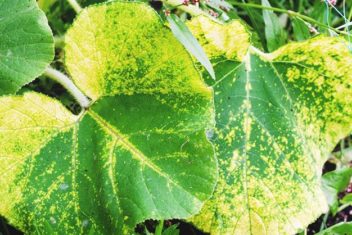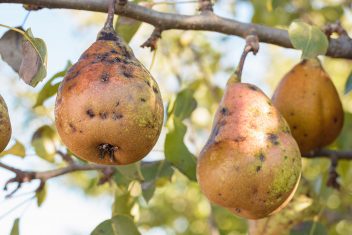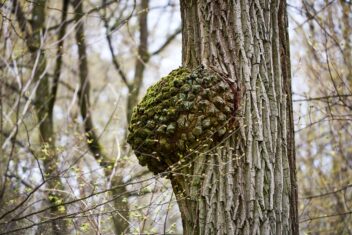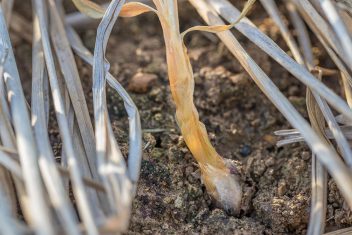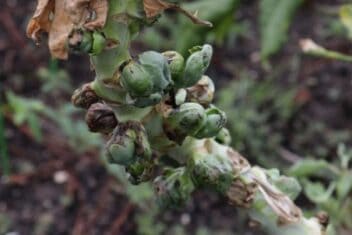There are many diseases that your plants might get that you have to deal with. A lot of them are annoying and take just a little effort on your part to defeat. Your plant recovers and you move on.
Now and then, your plants get a disease that is difficult to prevent and control, or can be confusing due to all the things that cause it. It’s easy to get overwhelmed when the disease has a generic name encompassing numerous pathogens.
Basal stem rot is a generic term that refers to various fungal and oomycete infections. The commonality is that it can kill your plant. We’ll break it all down so you don’t have to lose your garden to basal stem rot.
What is Basal Stem Rot?
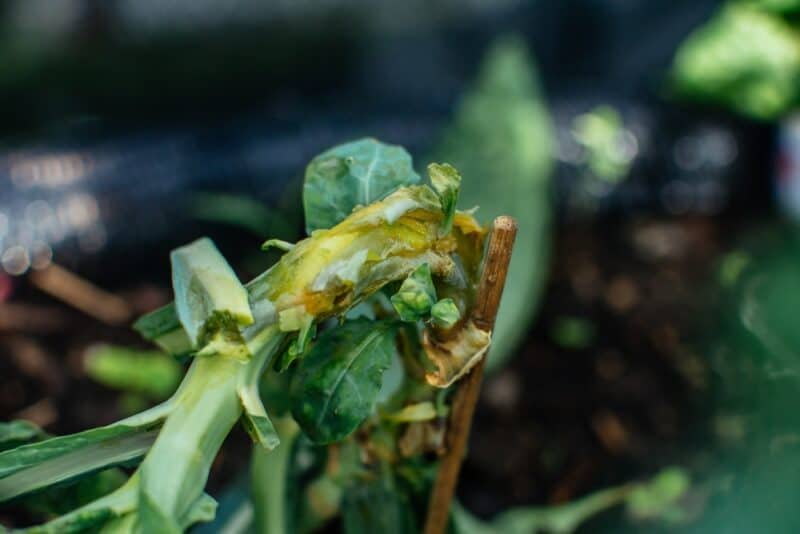
Basal stem rot is a generic term that describes fungal or oomycete-borne diseases that infect and weaken some plants’ lower stems and roots. Various pathogens affect different plants.
Basal stem rot disease causes the plant it infects to eventually wilt and die. In commercial environments, it can be devastating. In the home garden, it can cause a lot of headaches and hard work.
Crop losses and a severe reduction in yield are the result of basal stem rot, along with the death of the plant.
Certain types of basal stem rot are common worldwide, significantly affecting the palm oil industry.
Many of the plants affected by basal stem rot are in home gardens as well as commercial operations, so it pays to know what it’s all about.
The good news is, regardless of the pathogen, basal stem rot treatments are similar.
Here are some of the common causes of basal stem rot:
Fusarium Rot
When dealing with plant diseases in the home garden, you may have heard the word “Fusarium” before. Fusarium is a genus of soil-borne fungi that can cause various plant diseases, including root rot, damping off, and stem rot. Basal stem rot affects the roots and lower stems of plants.
It can be a little confusing. Fusarium wilt of tomatoes isn’t basal stem rot, even though the pesky Fusarium genus is involved. Fusarium wilt directly affects the xylem, the water-transporting tissue of the plant. It then affects the foliage and upper stem.
Basal stem rot (from the Fusarium genus) affects the roots and lower stem of the plant.
Fusarium basal rot is caused by several Fusarium species and affects plants such as:
Onions and Garlic
This disease first affects the basal plate, which is the base of the onion or garlic. The infection, caused by F. oxysporum f.sp.cepae, stops water and nutrients from being transported up the plant to the foliage.
The foliage turns yellow, and the leaves die back from the tips inwards.
As the bulb rots, the necrotic tissue moves up the bulb from the base. The roots below the basal plate turn black or sometimes pink. A white fungal growth may be seen around the bottom of the bulb at the same time.
Once fusarium basal rot infects a bulb, the disease can continue post-harvest. Mites will be attracted to the rotting plant material.
Tomatoes and Peppers
Fusarium basal rot can also infect nightshades like tomatoes and peppers.
When Fusarium is present in nightshades, the lower leaves turn yellow and drop off first, or yellow and wilt but remain on the plant. You will see discoloration of the stem just above the soil line and tracking up the plant. The stem rots close to the soil line, and the plant will die quickly once this begins.
Beans
When bean plants are infected, you will see severely stunted bean vines and yellowing all over. The yield will be reduced in both numbers and quality.
Cotton
The symptoms and results in cotton are the same as in beans. Often the disease is only identified once the plant has been dug up and inspected.
Phytophthora Rot
Pathogens in the Phytophthora genus can cause all kinds of stem, crown, and root rots. While it impacts dozens of species, the following plants more often suffer from basal stem rot when Phytophthora pathogens are present:
Avocado
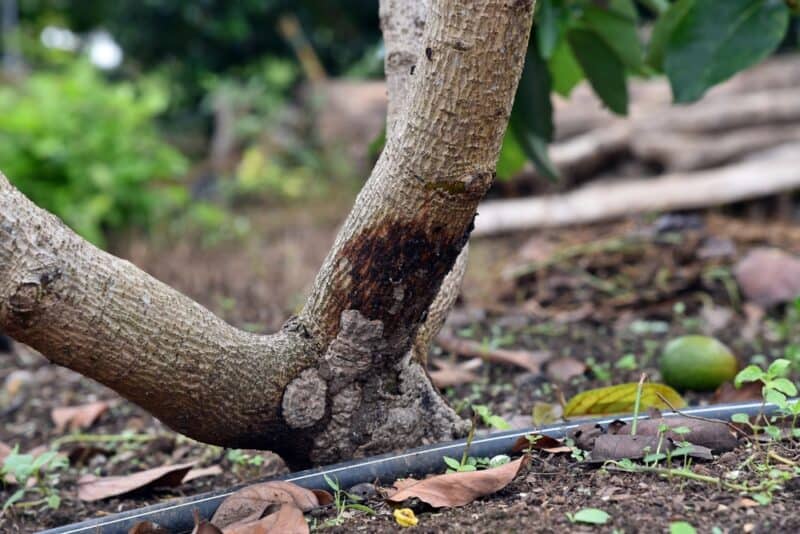
Basal stem rot can be a problem in avocado trees caused by the soil-borne oomycete Phytophthora cinnamomi. The pathogen can last a long time in the soil and is present in many host plants.
The disease affects the tree slowly, causing a gradual decline. Since there aren’t any dramatic symptoms until it’s too late, you might miss the signs and be surprised when the tree falls over.
If you’re really observant, there are a few things that can tip you off. The foliage will generally start to wilt as the disease affects the roots and lower stem or trunk of the tree.
In the later stages, water and nutrients are stopped from getting to the upper tree and foliage. The roots begin to decay, and the lower stem or trunk gets spongy.
In my case, I lightly tapped my young avocado tree with the ride-on mower, and the whole tree fell over, breaking off at the trunk just above the soil line. Inspection of the roots and trunk was the only way I diagnosed the disease.
Some avocado trees will display what you think are symptoms of water stress or other diseases, so it can be misleading.
Cocoa
Basal stem rot in cocoa is a serious problem in warm areas like Hawaii and South Florida. The pathogen that causes basal stem rot in cocoa plants is P. palmivora. It is responsible for significant crop losses.
The roots are infected along with the lower stem of the plant. In cocoa, the infection often ends up girdling the stem or trunk.
Eventually, the condition causes black pod rot, especially in areas with high humidity and sudden rainfall.
Rhizoctonia solani
Rhizoctonia solani can cause all kinds of disease, like stem rot, basal rot, root rot, and damping off. It impacts dozens of species, including peas, grasses, potatoes, tomatoes, peppers, rice, and corn.
Soybeans and cotton, in particular, suffer from basal rot when this fungal pathogen attacks.
Soybeans
This is another fungal pathogen that causes basal stem rot in soybean crops. In soybeans, the basal stem rot is quick and devastating. The stem rots away, causing the plant to wither and die.
Depending on when during the growing season the disease infects the plant, the loss of yield can be significant. This is particularly annoying in the home garden with smaller plots of soybeans.
Basal stem rot is worse in soybean plants that are already struggling with drought conditions or those that are nutrient deficient.
The symptoms of basal stem rot on soybean plants show at the stem at the soil line. A canker forms, which eventually girdles the plant. Water and nutrients can no longer reach the upper parts of the plant.
Cotton
R. solani can also cause basal stem rot in cotton, though the symptoms differ slightly from when cotton has basal stem rot caused by Fusarium rot.
When this fungus is present, the base of the stem is covered by reddish-brown lesions at the soil line. A canker forms, preventing water and nutrients from nourishing the plant above. But also causes the root mass to be small.
Yellowing, wilting, and death of the plant follow, or you’ll have a weak plant with a low yield.
Other Plants Affected by Basal Stem Rot
Other plants that are affected by basal stem rot include:
Palm (Including Oil Palm and Ornamentals)
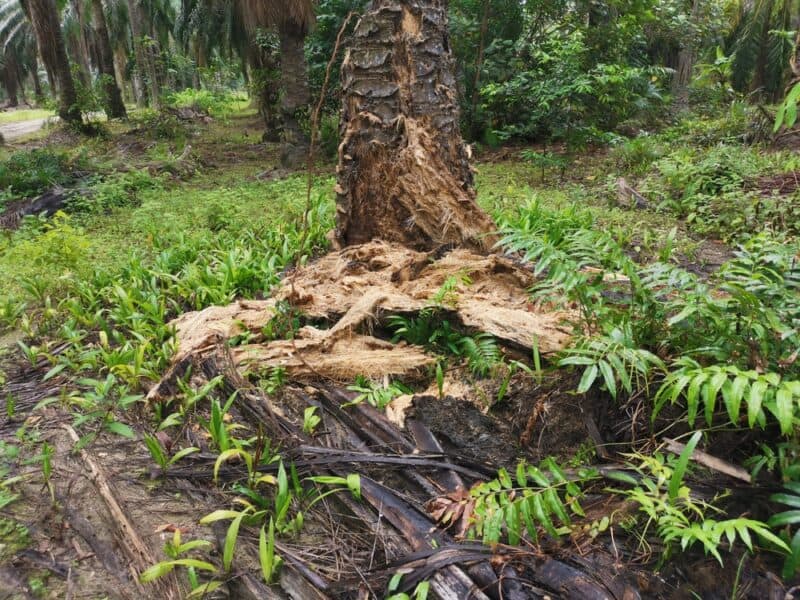
Palms can be infected with basal stem rot from various pathogens depending on the palm cultivar. This includes Phytophthora spp., Fusarium spp., and Ganoderma zonatum.
Similar to symptoms caused in other plants, palms suffer from stunted growth and wilting.
When palms get basal stem rot, you will often end up with obvious decay of the trunk or stem. Combined with a soft, spongy area close to the soil line, the palm trunk may omit a foul odor.
Banana
Basal stem rot is a problem in banana trees and may be caused by the pathogens already mentioned, as well as Oxysporum f.sp. cubense. The lower leaves wilt and become yellow first as the symptoms make their way up to the plant’s crown.
At the same time, the base of the tree becomes rotted and breaks away in pieces. The roots of the banana tree darken and eventually rot, causing the tree’s death over time.
8 Steps to Treat and Manage Basal Stem Rot
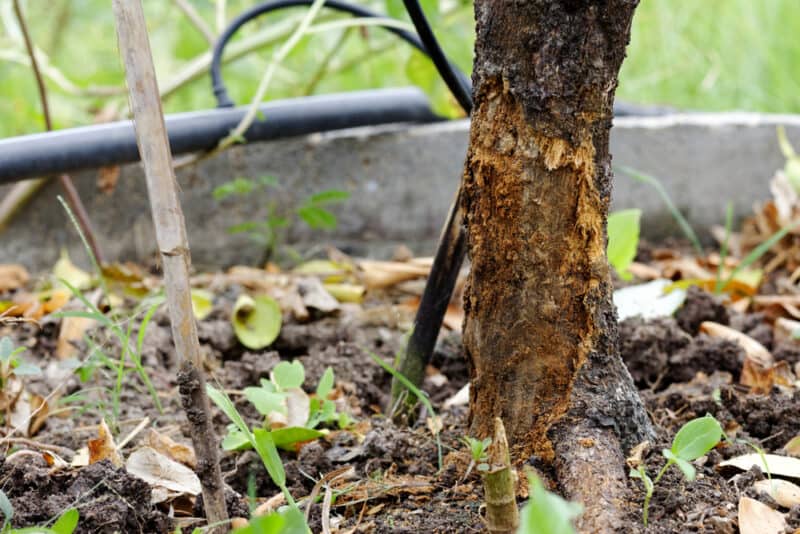
Prevention is better than treatment when it comes to basal stem rot.
Managing this disease in any type of plant can be a real challenge. Your response will depend on the plant and the pathogen that has caused the disease, but there are general steps you can take.
- Plant in well-draining soil unless the plant you have chosen likes wet or soggy ground. The pathogens that cause basal stem rot thrive in wet soil that doesn’t drain well and sits around the plant’s roots. If the soil structure has changed since you planted, add things like quality compost or well-rotted manure to improve it.
- Don’t overwater plants or garden and waterlog the soil. Different plants require different amounts of water and want it at other times. Learn what irrigation your plants need.
- Remove and destroy plant material you think is infected by any disease.
- Plant only disease-free (hopefully certified) specimens. Don’t reuse soil if it’s not from your garden and you don’t know the history of it.
- Use fungicides if you think your plants are susceptible to basal stem rot. Since they are of limited use, talk to your local nursery for advice on which one to use, if any.
- Monitor your plants for health and signs of any infections. Healthy plants are always better able to resist any disease if they are healthy.
- Practice crop rotation and don’t plant from the same family in any spot that suffers from any plant disease for three or four seasons.
